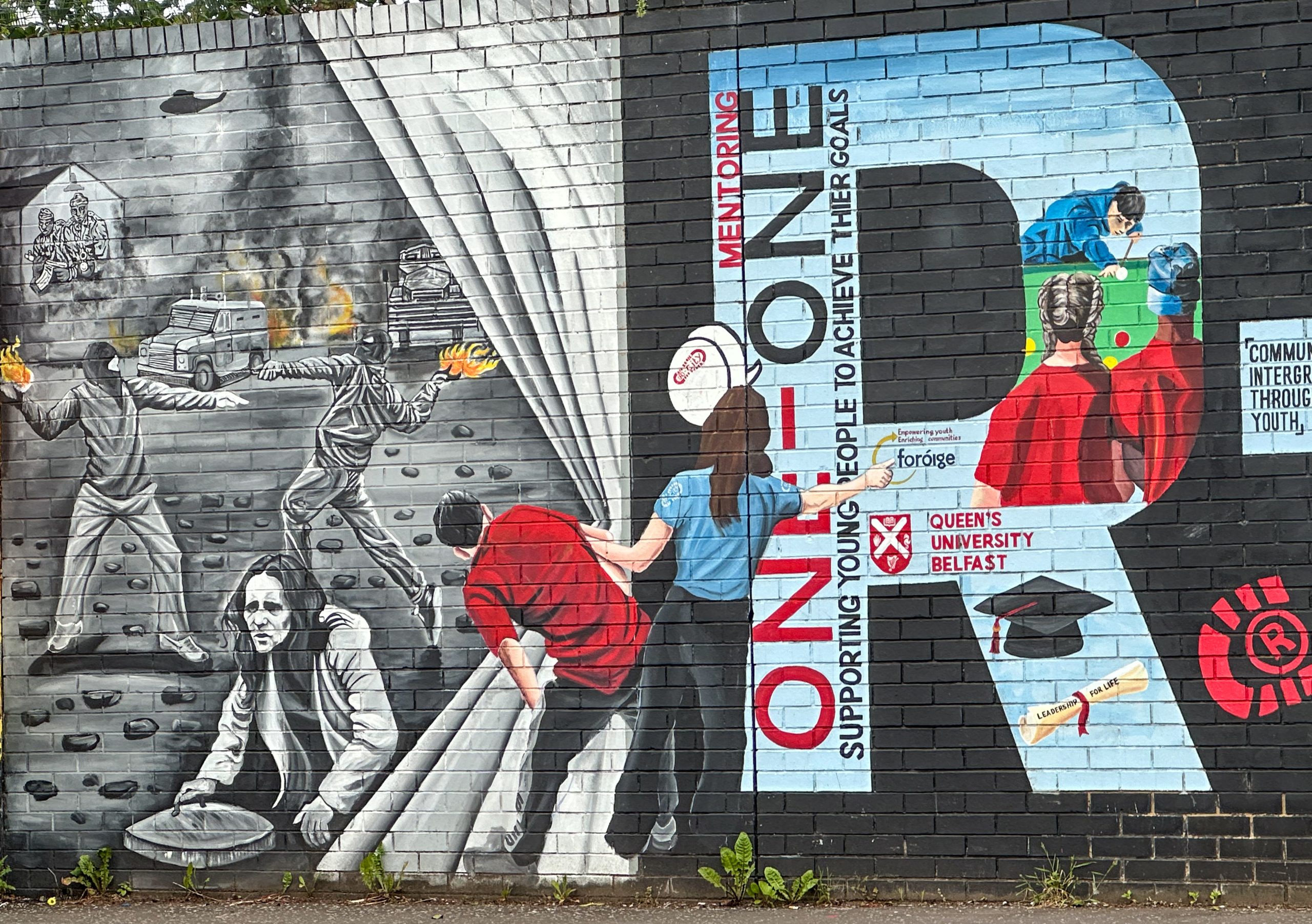Through the Peace Wall: A Taxi Tour of Belfast’s Troubled Past
Posted on June 3, 2025
A visit to Belfast isn’t complete without confronting its past. One of the most raw, revealing, and essential ways to do that is by taking a Troubles Taxi Tour through West Belfast — a journey into the very heart of a conflict that still casts a long shadow.
A Journey Through West Belfast
Your guide is typically a local, someone who lived through The Troubles, and what they offer is more than a history lesson. They drive you through Catholic (Nationalist/Republican) and Protestant (Unionist/Loyalist) areas, delivering personal insights and commentary from both sides of the infamous Peace Wall — the towering barrier that still divides communities in West Belfast.
At key points, the car stops, and you’re invited to get out and walk. You pass row after row of political murals, memorials, and slogans. Some are artistic, others militant. All are unapologetically direct. These murals don’t just decorate the walls — they speak from them, often reaffirming or reshaping your own opinions as you go.
Understanding the Catholic Struggle
For me, the experience enhanced my long-held belief: that the struggle in Northern Ireland, particularly in its early decades, was fundamentally a Catholic one — born from injustice and sustained by state-backed discrimination. From the very beginning of Northern Ireland’s existence, Catholics were denied jobs, starved of civil rights, and driven from their homes in a deliberate effort to maintain Protestant dominance. Such structural oppression was only ever going to end in resistance — and, inevitably, the tragic spiral of terrorism and counter-terrorism.
Messages on the Wall
The messaging on the Catholic side of the wall is rooted in that struggle — the pursuit of equality, civil rights, and solidarity with global liberation movements. The links drawn between Belfast and Apartheid-era South Africa, or between the nationalist struggle and the Palestinian cause, might feel provocative, but they aren’t accidental. The message is clear: this was a community fighting for dignity.
I say this not as someone with a religious dog in the fight. I’m not Catholic or Protestant, and I view both religious ideologies as more about control than compassion. But walking along the Shankill Road, on the Protestant side, I felt a stark contrast. The messaging there seemed colder, more aggressive, and less about peace or equality. Perhaps that’s my cognitive bias, siding with the underdog. Or perhaps there is, as I felt, something fundamentally different in tone — something more about dominance than justice.
Rejecting Violence, Recognising Reality
That’s not to say I support the IRA — I don’t. No one deserves to be blown up for sitting in a pub, placing a bet, or going to the shop. The violence inflicted on civilians is indefensible. But neither can one ignore that the Protestant strategy — which at times amounted to ethnic cleansing of Catholic areas — was actively supported by the British government and a partisan police force. That path was never going to end in peace, only in deeper division.
A Fragile Peace
Peace, such as it exists now, is a fragile term in Northern Ireland. It holds, but uneasily. The towering walls remain. So do curfew gates, fortified homes, and murals outside schools that celebrate paramilitaries rather than role models like George Best or Rory McIlroy. Seeing playgrounds overlooked by images of masked gunmen is heartbreaking.
What’s needed is investment — not just in infrastructure, but in healing. That means tearing down walls, ending segregated education, and building real, equal opportunities across the board. In some parts of West Belfast, that vision still feels a long way off.
Signs of Hope in the City Centre
Yet, hope persists.
Just a few hundred yards away from these hardened neighborhoods, we walked into the city centre. It was a wet Monday, and I was ready for gloom. But what we found instead were bustling pubs, lively music, and a crowd of all ages and backgrounds sharing songs in Maddens Bar — a cultural crossroads tucked in a side street. The warmth was real. The music was alive. People were together, not divided.
Belfast’s Battle for a Better Future
It gave me hope. Hope that Belfast — scarred but resilient — is slowly winning the battle to become a city of inclusion, not exclusion. That tolerance is becoming the rule, and bigotry the outdated exception.
Peace may still hang in the balance, but for the first time in generations, it is in touching distance.

Got something to say?